James Monroe was an American statesman, lawyer, diplomat and “Founding Father” who served as the fifth president of the United States from 1817 to 1825. A member of the Democratic-Republican Party, Monroe was the last president of the Virginia dynasty. But did you know Monroe cut his political teeth in Basking Ridge, New Jersey in 1777 at the ripe age of 19. Let’s take a look at this great American story.
The Virginia Farm Hand
James Monroe was born on April 28, 1758 near what is now called Monroe Hall, VA. He left school to support the family farm in 1776 and joined the Continental Army. Monroe was commissioned with the rank of lieutenant, serving under Captain William Washington. On December 26, 1776, Monroe took part in a surprise attack on a Hessian encampment after the incredible crossing of the Delaware the night before. Though the attack was successful, Monroe suffered a severed artery in his next battle at the Battle of Monmouth and nearly died. In the aftermath, Washington cited Monroe and for his bravery, and promoted Monroe to captain.
James Monroe to Basking Ridge – Winter of 1776
Bet you didn’t know that a week after the Battle of Trenton, Washington later returned to lure British forces south, then executed a daring night march to capture Princeton on January 3. The victories reasserted American control of much of New Jersey and greatly improved the morale and unity of the colonial army and militias. All told, 22 were killed, 92 wounded, 918 captured and 400 escaped in the Battle of Trenton. The Americans suffered two frozen to death and five wounded. One of those wounded was James Monroe. Monroe was severely wounded taking a musket ball to the shoulder. Dr. John Riker, who had joined Monroe’s party after crossing the river, tended his wounds, likely saving his life.
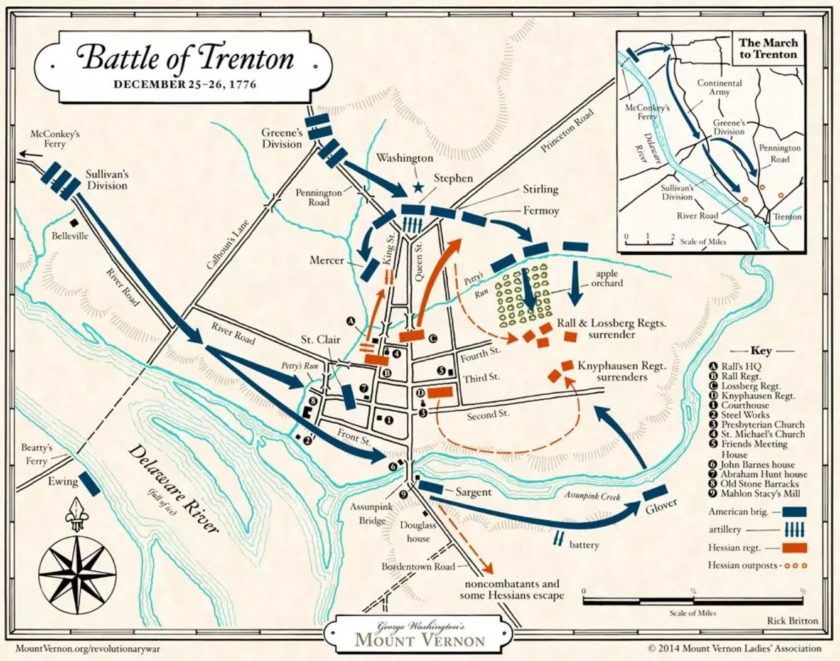
But with no casualties, there was one soldier shot in the shoulder – Captain James Madison of Virginia.
After Monroe suffered his injuries at the Battle of Trenton, he had to leave active duty. It was after the battle of Trenton when Monroe was escorted by Major General Stirling to establish a brigade headquarters in Elizabeth, New Jersey. They then both returned to Stirling’s manor “The Sycamore” in Basking Ridge and took up residence there so Monroe could heal from his injuries.
While Monroe was assigned to the staff of General William Alexander, Lord Stirling stayed at his residence in Baskinridge (Basking Ridge) , New Jersey while Washington’s men marched to Morristown, in northern New Jersey, where they established winter quarters.
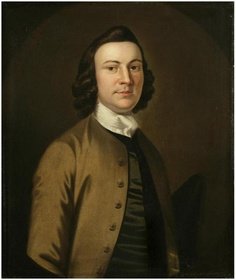

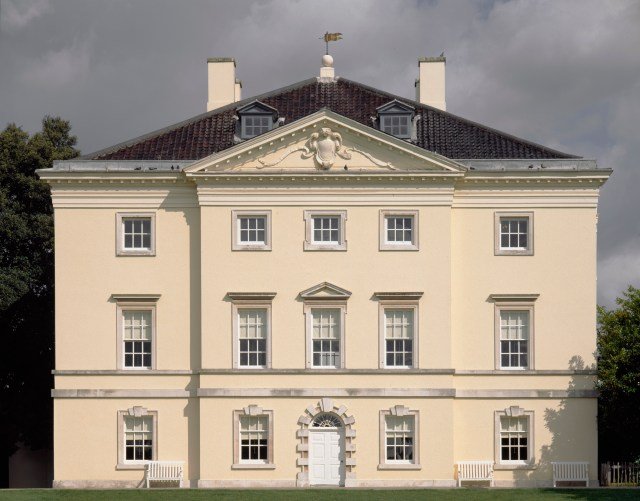
In Basking Ridge, Stirling was known to be a socialite and held a number of aristocratic receptions with many famous dignitaries including General Washington and New Jersey Governor William Livingston. You see, Stirling’s wife Sarah (Lady Stirling) was Governor Livingston’s sister.
During Monroe’s time at the Stirling Manor, Monroe also formed a close friendship with the Marquis de Lafayette, a French volunteer who encouraged him to view the war as part of a wider struggle against religious and political tyranny. Lafayette spent the harsh winter of 1777-78 with Washington and his men at Valley Forge. It was also Monroe’s first real chance to develop diplomacy skills in politically social situations.
Along Comes Miss Nannie Brown
So we have a 19 year old Virginan young man who’s been shot in the shoulder blade which needed to heal. While Lady Stirling and her daughter Catherine (Lady Kitty) were assisting in the healing of Monroe’s battle wounds, Monroe also met a young New York aristocrat female with deep family history, Miss Nannie Brown, an in-law of Lord Stirling’s son William.
You see, Miss Nannie Brown was also a nurse. But not just any nurse, Nannie was an orphan child of the aristocrat Brockholst family who’s uncle was the English lieutenant governor of New York. Smitten, Monroe pursued Brown with a vengeance only in the end to be heartbroken. As he was in convalescence on the Stirling estate, he offered his hand in marriage and she accepted. Yet it was Lady Stirling that opposed stating that Monroe was not an New York aristocrat like Brown’s family, but a mere Virginian farmer.
The Twist
Stories circled that the engagement ring he gave to his fiance was found in Morristown, New Jersey with the engraving “Your consent gives content” inside the ring. A bracelet also existed and was also supposedly in the hands of Mrs. John King Van Rensselaer. The wedding was supposed to have taken place at the nearby Van Horn House in Bridgewater (now the home to the Heritage Trail Association). When the wedding day came, the bride was dressed in her wedding gown, and a messenger arrived with a letter from James Monroe. As a 19 year old, you can sense his heart was broken based on his writings:
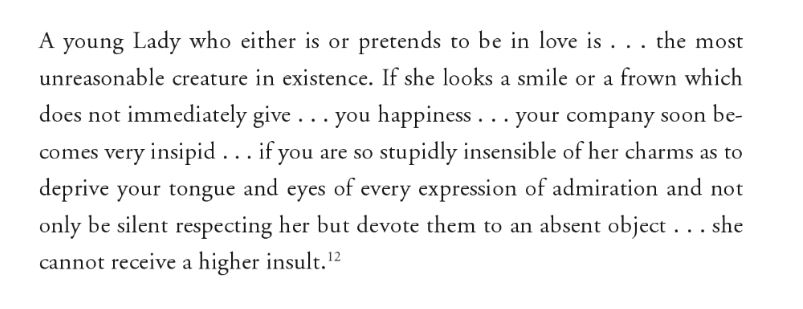
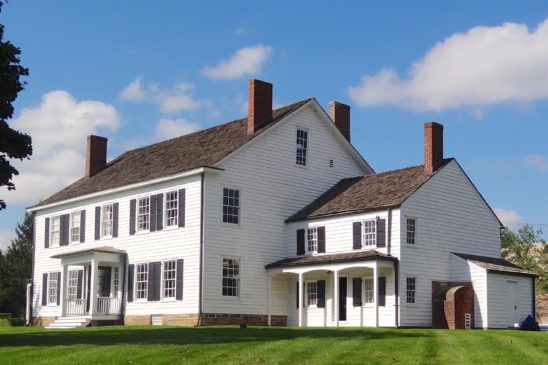
Needless to say, Monroe was shunned by New York Society. It was said some thirty years later, James Monroe ran into Alexander Hamilton’s wife in Washington DC. As President of the United States, where she stated that “I do not care to know a James Monroe” fully remembering what Monroe did to her friend Nannie Brown. “
Why Didn’t James Monroe Marry Nannie Brown?
So the big question that still remains in our story here is why didn’t James Monroe marry Nannie Brown that caused him to leave her at the alter at Phillip Van Horn home in Bridgewater. What seems to have been inferred is that Nannie’s relatives and Stirling’s wife insisted James wasn’t good enough for Nannie. His background was noted as being “obscure, from a tiny settlement called Monroe Creek and his lineage was undistinguished.” It was also noted that he was a college dropout from William and Mary College in Virginia. Lady Stirling also stated that the only reason he was trying to marry Nannie was because of her family connections. Our conclusion is that he couldn’t take the backlash and wrote the note, and became a no show groom.
We do know that it wasn’t until nine years later in 1786 when he married Elizabeth Kortwright. Strangely, she was from New York as well. It is said that Nannie lived for 25 more years, never married and died in 1802.
The Mr. Local History Project will keep digging
In 1923 a New York Times article was written about the book and story. It seems that some of the descendants of James Monroe were challenging the story of Nannie Brown.
“Seems two sisters are James Monroe’s nearest living descendants, and as a family group we are unwilling to allow any cloud to rest on his memory. I chance to have in my possession a letter written by James Monroe during the latter period of his life, which gives an account of his movements after he was wounded at Trenton. It reads as follows:”
The command fell on me, and soon afterward I was shot thro’ the shoulder by a ball which grazed my breast. I was carried by two or three soldiers, for I fell, to the room where Captain Washington was under the care of two surgeons, by whom my wound was likewise dressed. I was removed that night to Mr. Corryell’s, where I remained ten days, kindly treated, when I was removed to Mr. Wyncoop’s, where I remained for nine weeks.
James Monroe Later in his life. Story LInk
It was Judge Wynkoop’s fair daughter, Christine, and not Nannie Brown, who won Monroe’s heart through his long convalescence, but she was already pledged to another and was obliged to reject the young Virginian.
So who do you believe? Back to the Monroe story in Basking Ridge.
1778 – Monroe at 20 Leaves Basking Ridge
In General Washington’s orders, issued at Whitemarsh on November 20, 1777, Washington appointed Monroe aide-de-camp to Lord Stirling with a rank of Major. Then in a total shift, on December 20, 1778 James Monroe wrote a letter resigning from the Continental Army commission as well as his position as aide-de-camp on Stirling’s staff. Some have said it was Nannie Brown that broke his heart. He left for Philadelphia to stay with his uncle Joseph Jones who urged him to serve his country in government as an alternative to military service.
As They Say, The Rest is History
Monroe’s Resume
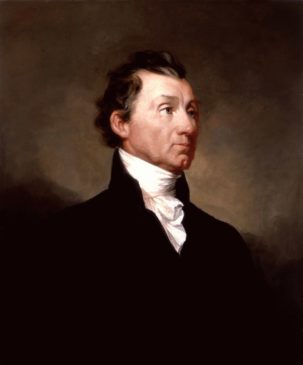
Monroe later served as a Governor of Virginia, Senator, Ambassador to France, negotiated the Louisiana Purchase, the Monroe Doctrine and yes the 5th President of the United States.
As they say, the rest is history.
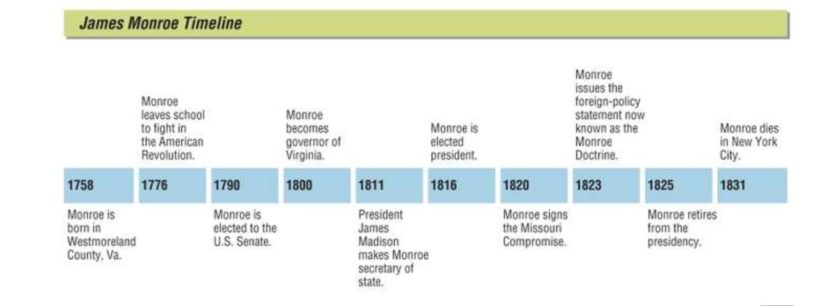
The Common Thread
As we look back on the James Monroe story we start to see a theme about a few famous people and how their stories starting intertwining themselves with other very interesting stories about the American Revolution. So James Monroe knows Lord Stirling. Stirling also is a great confident of Washington who has ties to everyone. Henry Southard knows Monroe, and General Lee gets captured in Basking Ridge and court martialed by Stirling. Stirling stays at Van Horne’s house in Bridgewater for a winter encampment and Monroe almost gets married in the same house. General Knox’s artillery gets hidden by Washington over in Pluckemin while Washington stays in Somerville. Knox lives in Bedminster, Nathanael Greene stays at Stirlings. Stirling stays at Van Hornes in Bridgewater. And we go on and on and on. The bottom line is that this area called the Somerset Hills has as much history as you can take. But it really gets interesting when you start putting all the pieces together of just what happened behind New Jersey’s Watchung Mountains. Why else do you hear New Jersey being called “the cockpit of the American Revolution.” Because it is!
James Monroe Tidbits
- Did you know that there is a Monroe Place in Basking Ridge – Yes there is!
- Monroe served in the battles of Harlem Heights, White Plains, Trenton, Brandywine, Germantown, and Monmouth all in his teens.
- Did you know it was James Monroe that chose Henry Southard of Basking Ridge as the 7th Secretary of the Navy? Yes this is true.
- Always a heavy drinker, and afflicted with gout and rheumatism, Stirling dies in January 1783 at Albany, NY — just several months before the Treaty of Paris (3-Sep-1783) formally ends the war.
- Strangely, Monroe was a big fan of General Charles Lee. Lee was in contention for Commander In Chief but Washington won out. And Stirling was Washington’s #3 man. And Stirling liked Monroe. Quite a strange triangle. But Monroe did see Lee retreating at Monmouth where Lee was later court martialed by Stirling nonetheless.
- Not well known today, but ranking third or fourth behind the Commander-in-Chief throughout most of the war, Lord Stirling was one of Washington’s most trusted generals.
- In 1965, the Lord Stirling School is established in Basking Ridge, NJ, in a farmhouse that was part of the original estate of Lord Stirling. Its mission is to help underperforming students achieve greater success.
- Lord Stirling died January 15, 1783 in Albany, New York
- The Van Horne house that Monroe was supposed to get married in served as the headquarters for William Alexander, Lord Stirling during the second Middlebrook encampment (1778–79)
- Stirling is buried in the churchyard at Trinity Church, New York
- The James Monroe Tomb is the burial place of United States President James Monroe in Hollywood Cemetery, Richmond, Virginia, United States.
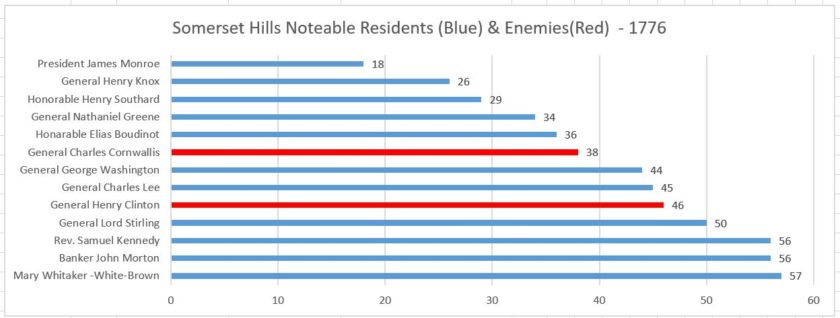
Additional Information
- James Monroe – The Last Founding Father: James Monroe and a Nation’s Call to Greatness
- The Story of Nettie Brown in the book The Social Ladder – page 23 published in 1924
- The Life of James Monroe – eBook
- America’s Secret Aristocracy – The story of James Monroe in Basking Ridge
- General Lee’s Capture at Widow White’s Tavern in Basking Ridge
- The Day that Altered American History in Basking Ridge
- Apostles of the Revolution – James Monroe
- Did you know Stirling was a wine maker? Through his gardener, Thomas Burgie, he advised the society in 1767 that he had planted 2100 vines. Earlier, in 1763, he had explained to his friend, the Earl of Sherburne, the difficulties that confronted an American viticulturist and had made a plea for governmental encouragement of such projects. Learn more
- The Stirling site was added to the National Register of Historic Places on May 22, 1978
- The Stirling site is currently occupied by a 1920s Montgomery Ward mail order house that was situated on the foundation of the original structure. Stirling lived there from 1763 until 1779. His home stood until 1920 when it was destroyed by fire.

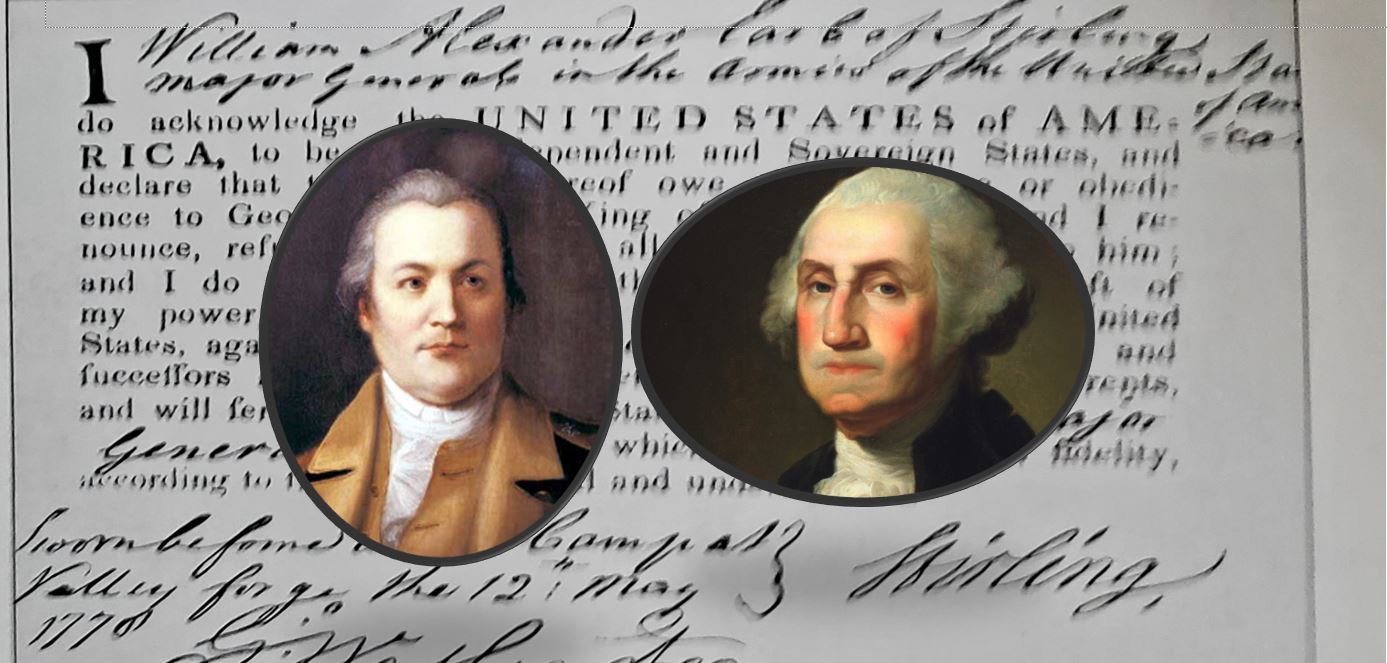
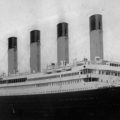
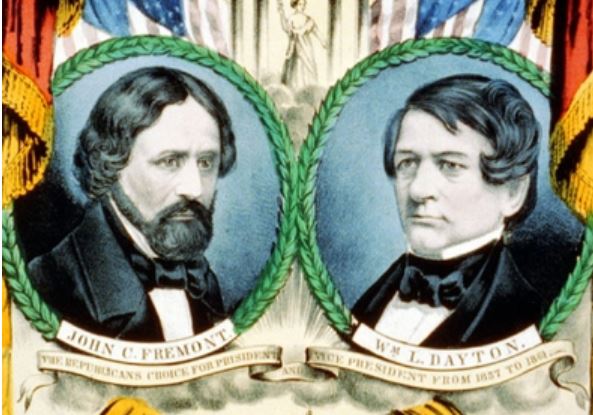
What an interesting write up; I love your posts!!!!!!!
I am a docent at James Monroe’s Birthplace, and an amateur historian who has studied Monroe’s live in great detail. Interestingly, there is no mention of anyone named Nannie Brown in the life stories of James Monroe. I also take offense to the statement that Monroe was a “school dropout” and a “farm hand”. James Monroe was home taught until he was enrolled by his parents in the highly respected school run by Archibald Campbell, here in Westmoreland County, Virginia. James Monroe attended Campbell’s school with his life long friend John Marshall, fourth chief justice of the United States. Monroe attended Campbell’s school until his father’s death in 1772. He started at William and Mary in 1774, when his Uncle Joseph Jones enrolled him. Monroe never returned to the family farm, and never worked there as a “farm hand”. He did leave William and Mary after he and his classmates seized weapons from the Governor’s palace in 1775. Soon after, Monroe went on to fight in the Battle of Trenton, beginning his military career. So the fifth president was never a school dropout as you called him. But maybe you are not really interested in the facts of James Monroe?
Thanks for writing. When you leave school the term “drop out” is a commonly used term. Whether he was home schooled was not the point. The point is he left school and joined the military. But I see your point and made the revision. The intent of the story was not his education, but that he was the one noted “wounded soldier” that was taken under the wing of Lord Stirling in Basking Ridge.